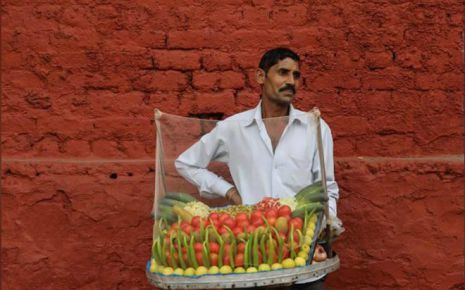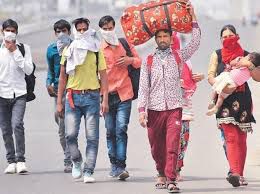Regulation Of Child Labour Under The Child Labour Act,1986
The government passed the Child Labour Prohibition and Regulation Amendment Act,
2016 on January 1st. The Amendment Act prohibits hiring children under the age
of fourteen. The amendment also makes it illegal for teenagers between the ages
of 14 and 18 to work in hazardous tasks or procedures. In the few exceptions
where it is not forbidden, it also regulates the working conditions of these
individuals.
The change makes it illegal for an employer to hire children or teenagers in violation of the Act. This act is a necessary for any organisation to ensure seamless operations. The management will take firm action against the company in the event that any offences against child labour are discovered.
The modification gives the competent Government the authority to grant a District Magistrate the authority and impose the requirements that are required to guarantee the effective execution of the Act's provisions. To guarantee that the Act is properly implemented, the State Action Plan has also been sent to all States and UTs.
As stated in Part B of the Schedule, children are also prohibited from working in locations where particular processes are carried out, such as those that make soap, tan, beedi, brick kilns, and roof tile units. The limitations do not apply to schools that are recognised or supported, nor do they apply to workshops where the occupant works with aid from his family.
These professions include:
Aside from slaughterhouses and abattoirs, the following jobs or processes are now illegal for minors to work in:
The Act forbids minors from working in 13 occupations and 51 procedures. The Indian Constitution's Fundamental Rights, under Article 24 under Right Against Exploitation, also prohibits child labour in industries.
Prohibitions in the Act
The Act forbids hiring youngsters younger than fourteen. It clearly prohibits any youngster under the age of 14 from engaging in certain hazardous tasks or occupations. It prohibits using kids in 16 processes and activities that are thought to be harmful to their physical and mental development. The Act sets strict penalties for employers who violate the law, including monetary fines and jail terms. It also regulates the industries in which minors are allowed to work. Family units and training facilities are not covered by the Act. A breach of the Act may lead to a fine of between Rs. 10,000 and Rs. 20,000 as well as a term of three months to one year in prison.
Highlights of the 1986 child labor prohibition and regulation act
The goal of the 1986 Child Labour Prohibition and Regulation Act is to end child abuse in the workplace in all its manifestations. Children under the age of 14 are not allowed to work in any dangerous occupation. The Act forbids the hiring of minors for particular positions and tasks. The Act states that no child shall be forced to work overtime or be allowed to work between the hours of 7 p.m. and 8 a.m. in order to safeguard workers from hazardous working conditions. In addition, no child shall work for longer than three hours without a break of one hour.
Conclusion
According to the Act, no child may be required or permitted to labour longer than three hours between the hours of seven o'clock and eight in the morning without a one-hour break. Every child working in an establishment has the right to one day off every week. Anyone who hires or allows a minor to work in an activity or operation where minors are not allowed to work faces up to a year in jail, a fine of at least Rs. 10,000, or both. For other offences, the maximum penalty is one month in jail, the maximum fine is Rs. 10,000, or both..
The change makes it illegal for an employer to hire children or teenagers in violation of the Act. This act is a necessary for any organisation to ensure seamless operations. The management will take firm action against the company in the event that any offences against child labour are discovered.
Child and adolescent labour prohibition & regulation act 1986
The Act addresses child labour, a social issue that is of concern. This Act regulates minors' working conditions in certain occupations and prohibits the employment of children under the age of 14 in others. Children are not allowed to work in 51 procedures and 13 occupations under the Act.The modification gives the competent Government the authority to grant a District Magistrate the authority and impose the requirements that are required to guarantee the effective execution of the Act's provisions. To guarantee that the Act is properly implemented, the State Action Plan has also been sent to all States and UTs.
What is the definition of child labour?
The kid Labour Prohibition and Regulation Act of 1986 defines a kid as one who has not completed his 14th (fourteenth) year of life. Part II of the Act forbids minors from working in any of the jobs listed in Part A of the Schedule, which includes, but is not limited to, domestic work, dhabas (roadside food stands), hotels, railway catering, construction work on or near railway tracks, the manufacturing of plastics and automobile garages.As stated in Part B of the Schedule, children are also prohibited from working in locations where particular processes are carried out, such as those that make soap, tan, beedi, brick kilns, and roof tile units. The limitations do not apply to schools that are recognised or supported, nor do they apply to workshops where the occupant works with aid from his family.
Key objective of child labour prohibition and regulation act, 1986
By outlawing the employment of minors under the age of 14 in specific professions and regulating their working conditions, the Child Labour (Prohibition and Regulation) Act of 1986 aims to address a social concern.These professions include:
- railway passenger, goods, or mail transport;
- bidi making;
- carpet weaving;
- match, explosives, and fire manufacturing; and
- soap manufacturing.
Aside from slaughterhouses and abattoirs, the following jobs or processes are now illegal for minors to work in:
- hazardous procedures and risky operations, as described;
- printing, as defined;
- cashew and cashew nut descaling and processing, as defined;
- In the electrical sector, (v) soldering procedures are used.
The Act forbids minors from working in 13 occupations and 51 procedures. The Indian Constitution's Fundamental Rights, under Article 24 under Right Against Exploitation, also prohibits child labour in industries.
Prohibitions in the Act
The Act forbids hiring youngsters younger than fourteen. It clearly prohibits any youngster under the age of 14 from engaging in certain hazardous tasks or occupations. It prohibits using kids in 16 processes and activities that are thought to be harmful to their physical and mental development. The Act sets strict penalties for employers who violate the law, including monetary fines and jail terms. It also regulates the industries in which minors are allowed to work. Family units and training facilities are not covered by the Act. A breach of the Act may lead to a fine of between Rs. 10,000 and Rs. 20,000 as well as a term of three months to one year in prison.
Highlights of the 1986 child labor prohibition and regulation act
The goal of the 1986 Child Labour Prohibition and Regulation Act is to end child abuse in the workplace in all its manifestations. Children under the age of 14 are not allowed to work in any dangerous occupation. The Act forbids the hiring of minors for particular positions and tasks. The Act states that no child shall be forced to work overtime or be allowed to work between the hours of 7 p.m. and 8 a.m. in order to safeguard workers from hazardous working conditions. In addition, no child shall work for longer than three hours without a break of one hour.
Conclusion
According to the Act, no child may be required or permitted to labour longer than three hours between the hours of seven o'clock and eight in the morning without a one-hour break. Every child working in an establishment has the right to one day off every week. Anyone who hires or allows a minor to work in an activity or operation where minors are not allowed to work faces up to a year in jail, a fine of at least Rs. 10,000, or both. For other offences, the maximum penalty is one month in jail, the maximum fine is Rs. 10,000, or both..
Law Article in India
Legal Question & Answers
Lawyers in India - Search By City
LawArticles
How To File For Mutual Divorce In Delhi

How To File For Mutual Divorce In Delhi Mutual Consent Divorce is the Simplest Way to Obtain a D...
Increased Age For Girls Marriage

It is hoped that the Prohibition of Child Marriage (Amendment) Bill, 2021, which intends to inc...
Facade of Social Media

One may very easily get absorbed in the lives of others as one scrolls through a Facebook news ...
Section 482 CrPc - Quashing Of FIR: Guid...

The Inherent power under Section 482 in The Code Of Criminal Procedure, 1973 (37th Chapter of t...
The Uniform Civil Code (UCC) in India: A...

The Uniform Civil Code (UCC) is a concept that proposes the unification of personal laws across...
Role Of Artificial Intelligence In Legal...

Artificial intelligence (AI) is revolutionizing various sectors of the economy, and the legal i...








Please Drop Your Comments